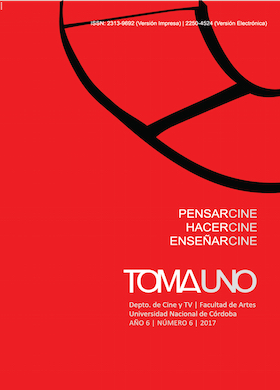The cinema of Adirley Queirós: criticism of the urban-social space as a punitive landscape or how to narrate about from the margins
DOI:
https://doi.org/10.55442/tomauno.n6.2018.20905Keywords:
The political - social isolation, Cinema Documentary/ fiction, Punishment representation, Urban design discoursesAbstract
The contemporary ways of watching and punishing are systematically developed until the fact that we can hardly notice them. The exercises of social isolation seem to be functional to the authorized social power institutions. This power is the one that proclaim social discourses about the socio-economic differences, justifying projects about physical and geographical distribution of people who conforms the urban area. Exposed as a indirect punishment, but being public-explicit in the level of the facts, a punitive logic is reproduced in the discourse/s that legitimize certain way of social distribution. Tense discourses about the complexity of this topic also have their treatment in the Latin American film field. In the filmography of Adirley Queirós (1970, Brazil), the narrative focus is developed through the historical problematization of the urban design of Brasilia. Building a particular aesthetic that manages to conjugate the fantastic and documentary about of Ceilandia, the satellite city of the Brazilian capital, Queirós contrasts not only geographic-spatial differences, but also the consequent socio-political implications. To analyze the representations of the cinematographic language that are reformulated in the discussion with respect to the subject, the theory developed by Michel Foucault on Discipline and Punish (1975) and the semiotic contributions of Eliseo Verón will be considered. The representation that Queirós works on physical displacement as punishment is the starting point to think about a political dimension in his filmography.
Downloads
References
Benjamin, W. (2010). Libro de los pasajes. Madrid: Ediciones Akal, 2007.
Butler, Judith. Marcos de guerra: las vidas lloradas. México DF: Editorial Paidós Mexicana.
Boito, M.E.; Espoz, M.B. (2014). Urbanismo estratégico y separación clasista: Instantáneas de una ciudad en conflicto. Córdoba: Editorial Puño y Letra.
Foucault, M. (2002). Vigilar y Castigar: nacimiento de la prisión. Buenos Aires: Siglo XXI Editores Argentina.
Gaudreault, A. Jost, F. (1995). El relato cinematográfico: cine y narratología. Barcelona: Paidós.
Genette, G. (1989): Figuras III. Barcelona: Lumen.
Gómez Sánchez, A.; Hellín Oruño, P.; San Nicolás Romera, C. (2011). “Los sentidos de la ciencia en el cine: metodología para su análisis” en Redalyc: Red de Revistas Científicas de América Latina y el Caribe, España y Portugal. Estado de México: Razón y Palabra, vol. 16, núm. 78.
Greimas, A.J. (1976). Semántica estructural: investigación metodológica. Madrid: Gredos.
Grüner, E. (2010). La oscuridad y las luces. Capitalismo, cultura y revolución. Buenos Aires: Edhasa.
Triquell, X. (coord.) (2012). Contar con imágenes: una introducción a la narrativa fílmica. Córdoba: Editorial Brujas.
Triquell, X. y Ruiz, S. (2014). “La dimensión política de los discursos sociales”, en Revista De signos y sentidos nº 15: El discurso político. Santa Fe: Universidad Nacional del Litoral.
Downloads
Published
Issue
Section
License
Copyright (c) 2018 Milena Sol Tiburcio GonzálezThis work is licensed under Creative Commons Attribution-NonCommercial-NoDerivs 2.5 Argentina .


































